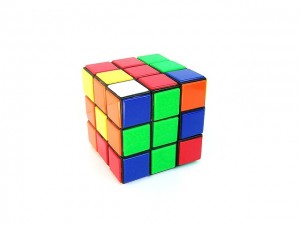Lego, Rubik’s Cube, and other toys immortalize colors of childhood. Can you recall quite vividly the color of Big Bird, Oscar, Elmo, and Barney? Quite often there are surveys on Facebook to find out people’s ages or decade they grew up. I’m sure there could be one to find out what toys people played with as children just by asking them to match and pick colors.
 The colors of Rubik’s cube are memorable ones, and not just for fun, playful reasons. Did you also find that toy terribly frustrating? Those colors are unforgettable ones. But just today, I watched a news clip about a 9-year old boy and how he plays with it. Instead of spending countless, fruitless hours turning and twisting the rows in infinite ways, he built a Lego robot to do it.
The colors of Rubik’s cube are memorable ones, and not just for fun, playful reasons. Did you also find that toy terribly frustrating? Those colors are unforgettable ones. But just today, I watched a news clip about a 9-year old boy and how he plays with it. Instead of spending countless, fruitless hours turning and twisting the rows in infinite ways, he built a Lego robot to do it.
Brains are so amazing, especially the brains of children. Children’s play can be incredibly powerful. Some children will be attracted to colors and art, some to nature, some to mechanics and machines, some to numbers and logic, and some to social groups. This is part of what is now called multiple intelligence, or in plain words, the ways each of us are smart. Rather than how smart some one is, we need to ask how some one is smart.
Children often reveal in their play, how they are smart. What kinds of toys does your child choose? How does he or she play with them? What kinds of interactions with others? And even what colors appeal to your child? Your child may not be building Lego robots to solve ingenious math puzzles, but your child will have unique talents, as well as unique challenges too.
A play-of-the-day for anytime is to play. How will your child play today?
